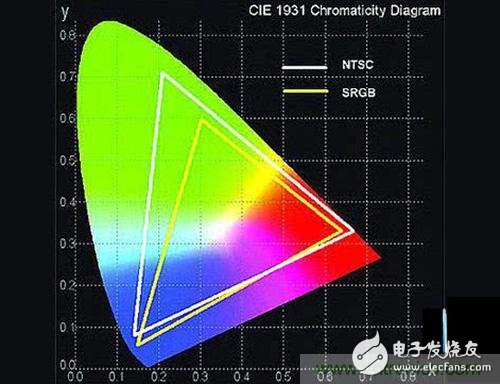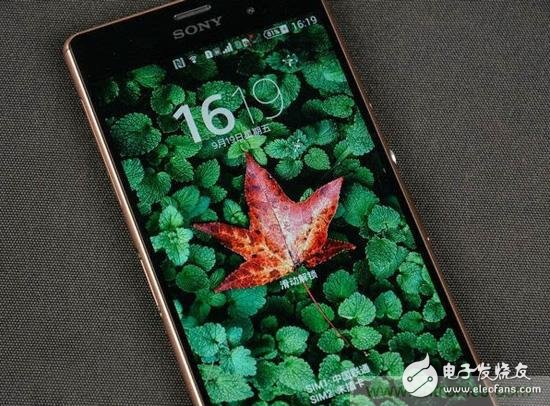Quantum dot screen products have come to the fore, and manufacturers' media have claimed that it can kill OLED TVs, and the cost is still more than half. Has the name of the name that sounds like this has reached the definition of "cool" in our minds?
The real "cool" in the legend is that the picture looks bright enough, and it is full of joy at a glance. The brightness and contrast parameters are naturally higher and better. OLED TVs that can truly meet the "cool" requirements are still in the sky-high price stage. If it is not a problem for local tyrants to squander dozens of millions, OLED TVs can be called aristocratic products. But in the past two years, especially this year's CES show, a product called quantum dot screen has come to the fore, and manufacturers' media have claimed that it can kill OLED TV, and the cost is still more than half. Has the name of the name that sounds like this has reached the definition of "cool" in our minds?

The biggest highlight is that it looks more "glamorous"
Before exploring the quantum dot display technology, let us first look at the improvement of the intuitive experience that this legendary quantum dot screen can bring us. Although the methods for completing the quantum dot screens of various manufacturers are different, the main points of publicity are Highlighting the "gamut" of such screens is wider, or the saturation is significantly improved, this indicator can even be better than OLED, with the introduction of features such as lower power consumption.
Often listen to the word "color gamut" by the manufacturer, then what is the color gamut? The gamut is wide, what does it look like? The breadth and diversity of colors that the human eye sees in nature, even the screen technology that has been developed for so many years, is difficult to achieve, which means that the current screen cannot express such diverse colors at all. In plain language, the range of colors that the screen can display, such as the most red to what extent, the greenest green to what extent, is the color gamut of this screen, also called the color space.

In 1997, Microsoft and HP, EPSON and other companies jointly developed a color language protocol, which is now known as sRGB, which is a color space, which can indicate how wide the color gamut is achieved by devices such as display and imaging. The value range is the range of the calibration of the triangle area in the above figure. Many of the PC displays we use today are of good quality, including the iPhone screen in the mobile phone industry. The color gamut is basically 100% coverage sRGB, that is, the color breadth of the display is the same as sRGB.

(Compared with sRGB and NTSC color gamut)
But in fact, sRGB is a very narrow color range (really blame Microsoft), so in addition to sRGB, there are color spaces like Adobe RGB, ProPhoto RGB (the king of the legendary color space), NTSC and so on. Nowadays, NTSC color space is used more in the promotion of manufacturers. Its range is much wider than sRGB. Generally speaking, the color range of sRGB is only 72% of NTSC (so Meizu said that the charm blue Note screen covers 72%. NTSC).
The legendary price explosion of OLED TVs, the color gamut is said to exceed the NTSC range, one of the advantages of OLED screens than ordinary LCD screens is here; and the color gamut of quantum dot TVs is said to exceed the current OLED TVs (not long ago The TCL Quantum Dot TV H9700 officially states that its color gamut is 110% NTSC).

The improvement of the color gamut, without the adjustment (and without the color management mechanism), the biggest difference in perception is to look at a lot of "glamorous". In the early years, Samsung's AMOLED screen (one of the OLED screens) showed this feature. Because most of the pictures on the market are made for the sRGB standard, it looks like a drop on the AMOLED screen. oil. Samsung realized this problem later, so it was intended to control it.
But Sony's understanding is different from Samsung. Sony once said in the promotional video that human brain memory tends to make something more vivid than the real thing. For example, if you go to a friend's house, you can see a blue guitar. When you think about it, you will deliberately make the guitar bluer and more vivid in your memory; on the other hand, some empirical colors will tend to be stable, such as human skin color, memory will not be done. Saturated, so Sony tends to adjust the skin tone of the human body in the display device to normal, but tends to exaggerate other colors.

(Xperia Z3 uses a quantum dot screen)
This is also the key for Sony to dare to directly map more than 130% sRGB color gamut screens for phones like the Xperia Z3. The Xperia Z3 is also a mobile phone product with less quantum dot screens on the market, and a small partner using the Xperia Z3 phone. It should be able to clearly feel that the color of the screen of the mobile phone is extremely bright, even reaching the level of the professional mode of the Samsung Galaxy mobile phone, which shows the change that quantum dot display technology can bring. And this color is pleasing to the human eye, and quantum dot technology naturally has a market.
The essence of the quantum dot screen is to change the backlight
To understand how quantum dot screens compare to OLED screens, we must first understand the nature of quantum dot technology. The traditional LCD screen has a backlight that is located at a lower position to illuminate the entire screen. There are many options for backlighting. One of them is RGB-LED, which is blue, green and red.
But the cost of this solution is too high, so the more common on the market is a (white light) backlight scheme called W-LED, which is generally blue LED + yellow phosphor, which gets white backlight - as for the screen display various Different colors are achieved by color filters above the backlight. Most current LCD screens use such backlighting and color rendering solutions. The main problem with this solution is that the spectrum of light emitted by the phosphor is not monolithic, in addition to the red, green, and blue light required for imaging, there are other variegated lights. And after the complicated system such as filter light, the utilization of the backlight is also compromised.

The legendary quantum dot display technology is a revolution in backlighting: so-called quantum dots can be thought of simply as materials with a length, width, and height below 100 nm (the size of several atoms). This tiny semiconductor crystal is It can be illuminated after excitation. As for how it shines, it is a scientific research field. It is not discussed here. One of the more reliable conclusions is that the size of a quantum dot is proportional to the energy intensity (wavelength) of the light it emits. That is to say, the smaller the diameter of the quantum dot, the shorter the wavelength of the light after excitation, that is, the color is bluish, and the larger the diameter, the longer the wavelength of the light after excitation, that is, the color is reddish.

In this way, as long as the size of the quantum dot is controlled, it can be made to emit light of three colors of red, green and blue. In an ideal situation, if such a material can be applied to a screen product, the superiority is greatly greater than the current W-LED backlight, and even the filter is not required. Quantum dots are single-energy structures, and the spectrum of light excited by each fixed-size quantum dot is extremely narrow, which is the legendary solid color, which is very helpful for accurately controlling color and achieving accurate color reproduction. Because of the higher color purity, it can produce richer colors. Under this circumstance, the current OLED essence can not reach the theoretical index of quantum dot display technology, and it is not surprising that the gamut of the quantum dot screen is wider.
KNL4-100 Residual Current Circuit Breaker
KNL4-100 Moulded Case Circuit Breaker is MCCB , How to select good Molded Case Circuit Breaker suppliers? Korlen electric is your first choice. All moulded Case Circuit Breakers pass the CE.CB.SEMKO.SIRIM etc. Certificates.
Moulded Case Circuit Breaker /MCCB can be used to distribute electric power and protect power equipment against overload and short-current, and can change the circuit and start motor infrequently. The application of Moulded Case Circuit Breaker /MCCB is industrial.
Korlen electric also provide Miniature Circuit Breaker /MCB. Residual Current Circuit Breaker /RCCB. RCBO. Led light and so on .
KNL4-100 Molded Case Circuit Breaker,KNL4-100 Small Size Molded Case Circuit Breaker,KNL4-100 Electrical Molded Case Circuit Breaker,KNL4-100 Automatic Molded Case Circuit Breaker
Wenzhou Korlen Electric Appliances Co., Ltd. , https://www.zjmoldedcasecircuitbreaker.com